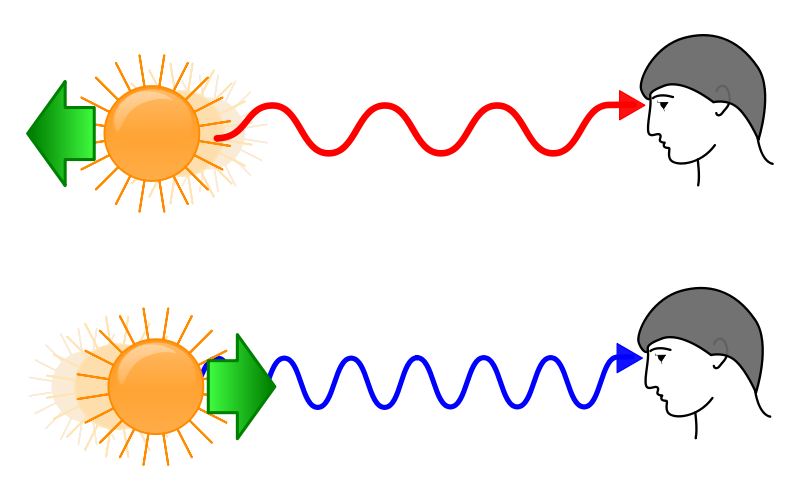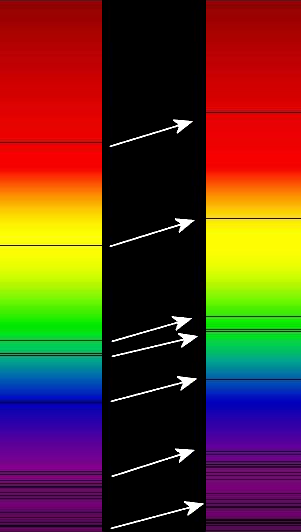Where do I Start?
 The purpose of this website is to help with your understanding of the phenomenon known to astronomers as 'redshift'. The Oxford Dictionary of Astronomy defines redshift as "The amount by which the wavelength of light from a receding object is lengthend (i.e. moved to the red) by either the Doppler shift or the expansion of the universe". This may sound a bit complicated, but after reading through this website, you'll have a clearer understanding about redshift, and have an idea of how and why astronomers measure this value.
The purpose of this website is to help with your understanding of the phenomenon known to astronomers as 'redshift'. The Oxford Dictionary of Astronomy defines redshift as "The amount by which the wavelength of light from a receding object is lengthend (i.e. moved to the red) by either the Doppler shift or the expansion of the universe". This may sound a bit complicated, but after reading through this website, you'll have a clearer understanding about redshift, and have an idea of how and why astronomers measure this value.
For beginner's to astronomy...
Where you start on this website depends entirely on your background knowledge of this subject. For beginners to Astronomy, or the redshift topic in general, we recommend that you begin by reading the sections on the 'EM spectrum<' so you can familiarise yourself with the basics. Then, move on to the 'Doppler Effect<' and 'Redshift<' sections. After reading through these, you should have a good understanding of where redshift comes from.
reading the sections on the 'EM spectrum<' so you can familiarise yourself with the basics. Then, move on to the 'Doppler Effect<' and 'Redshift<' sections. After reading through these, you should have a good understanding of where redshift comes from.
For those with more advanced knowledge...
For those who have more of an in-depth knowledge of Astronomy, and know how redshift occurs, we recommend you start at the section named 'Spectroscopy<', as this will give you more detailed information on the physics behind measuring redshift.
For all...
The 'Hubble<' section is a good place to start for all abilities - here you will find information on one of the most famous astronomers the world has seen - Edwin Hubble, and learn about how his theories and investigations shaped our view of the Universe.
And finally...
Wherever you see the ![]() image, you will find a link to an animation or Java applet, designed to help reinforce what is being described on the page.
image, you will find a link to an animation or Java applet, designed to help reinforce what is being described on the page.
Wherever you see a ![]() you will find a hint or tip to help you remember a key point.
you will find a hint or tip to help you remember a key point.